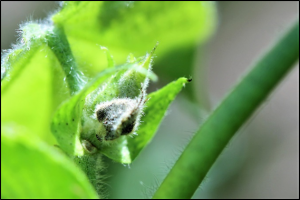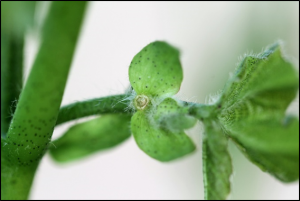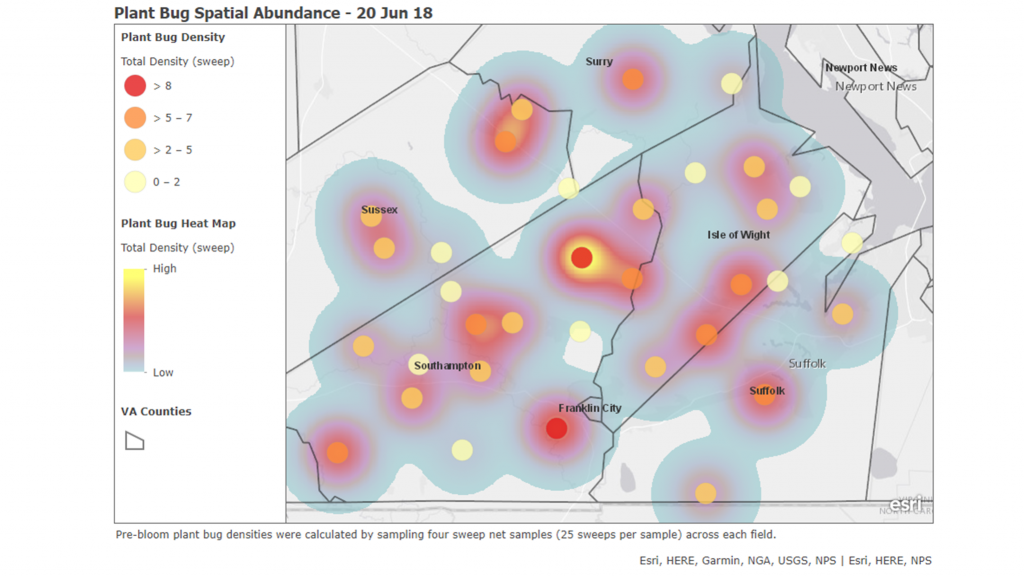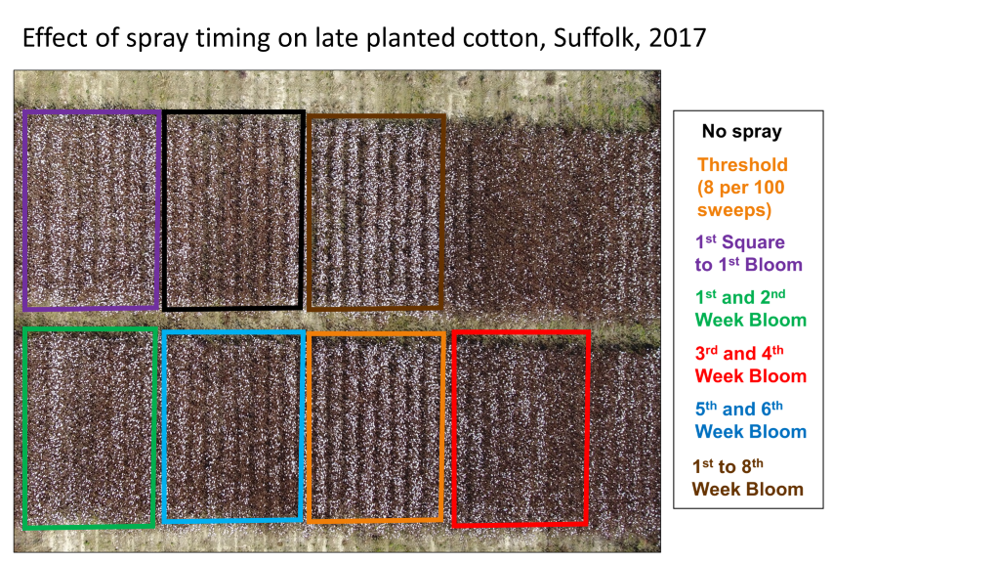Black squares and missing squares are a sign that plant bugs have fed in your field. Scout to determine if they are still active.
Tarnished plant bug (TPB) has begun its annual migration into Virginia cotton. PhD student Seth Dorman scouted VA cotton fields this week (image below) that were over pre-bloom thresholds (indicated in red).
Plant bugs can be found in every VA cotton field from the first square on, but it does not pay to spray unless they are causing damage. Use thresholds when determining what fields to treat and use a sweep net to sample multiple places in a field since populations are not evenly distributed. Prior to bloom, fields require treatment if you find 8 plant bugs in 100 sweeps AND less than 80% square retention. Adults are highly mobile and can reinfest quickly following applications. It may be tempting to spray only later in the season. If you are above threshold, this decision will lower your yield.
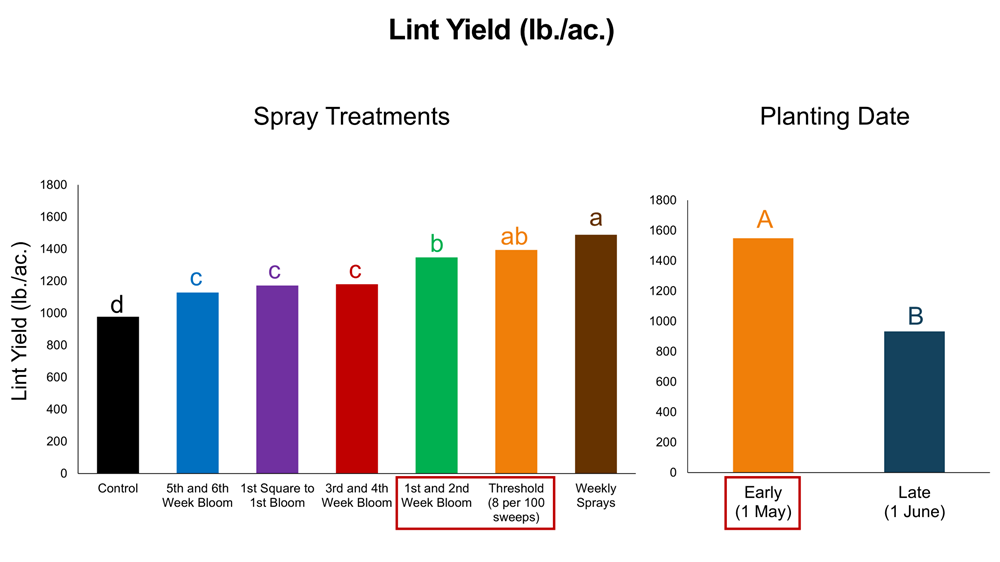 Impact of different spray timings on yield. Spraying at any point in the season yielded higher than unsprayed cotton. Thresholds are as effective as weekly sprays and will save you money. The damage potential in late-plated cotton is higher.
Impact of different spray timings on yield. Spraying at any point in the season yielded higher than unsprayed cotton. Thresholds are as effective as weekly sprays and will save you money. The damage potential in late-plated cotton is higher.
Important considerations for this season include:
1) Late-planted cotton is at higher risk. This picture from last season shows that losses in late-planted cotton (Jun 1) are much greater than in early-planted cotton (May 1).
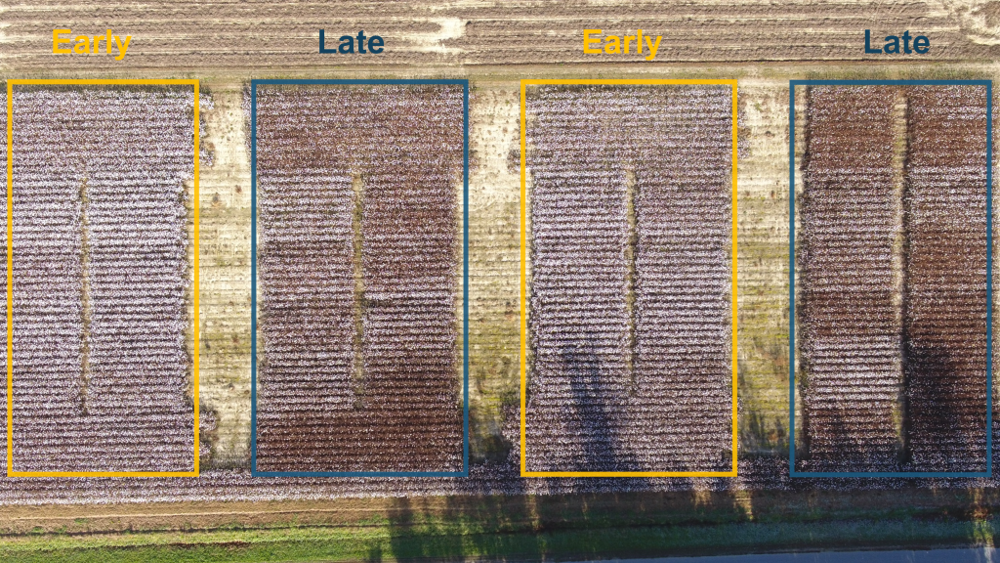 Effects of different spray timings on lint yield are much more apparent in late-planted cotton. Spraying for plant bugs at threshold will save money and increase yield regardless of planting date.
Effects of different spray timings on lint yield are much more apparent in late-planted cotton. Spraying for plant bugs at threshold will save money and increase yield regardless of planting date.
2) Spraying at threshold is as effective as weekly sprays and costs less money. Spraying only early (pre-bloom) or only late (>5th week of bloom) are the least effective spray timings.
3) Rotate insectides. Some populations in the Suffolk area are surviving high doses of acephate and bifenthrin. If your cotton is squaring, thrips treatments are no longer needed and acephate should be left out of the tank. I recommend using a neonicotinoid product pre-bloom (clothianidin, thiamethoxam, or imidacloprid). Check the label and use the highest allowable rate. Neonicotinoids will not provide adequate control after cotton has bloomed.
Seth’s team will continue to scout VA cotton counties and we will post distribution updates and management recommendations as the season progresses. I would like to thank Seth for his hard work on this problem. If you have concerns, please contact me.

